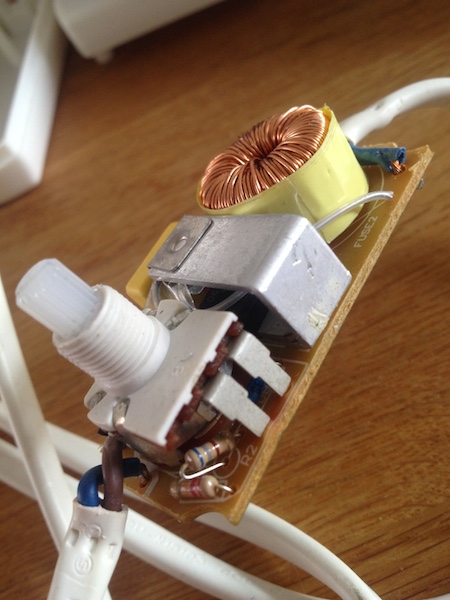I originally asked this question on DIY StackExchange. So far no answers and a suggestion to try on Electronnics, so here goes:
I have an IKEA lamp with dimmer switch which took a knock and immediately started outputting full brightness. I've read a little about how dimmer switches work and that this is likely caused by the triac breaking.
I would like to repair this by replacing the triac (/diac combination?) but want to make sure that I have the right idea and check if there are any risks in doing so.
Photos:



As I understand it the block in the middle with the metal cover is the triac, possible also a unit containing a diac. Then the obvious variable resistor connected to the outside, a fuse (looks like a second fuse attached under the metal hood -- and labelled on the board -- but can't see it properly until disassembly), some resistors (baseline resistance? "taper"?) and finally the inductor and capacitor smooth out the voltage cut, reducing stress/noise on/from the load.
I plan to desolder the triac unit and replace it with an equivalent part (if I can find one). Is there a good way to confirm the triac is broken in advance? Are there any safety concerns?
UPDATE: I have since confirmed that the metal cover in the middle contains a triac (including make/model) and a thermal cutoff.

